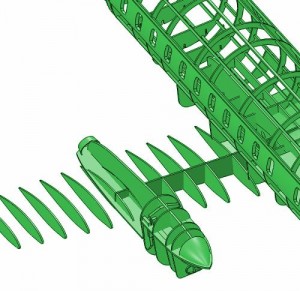 The SAAB 340B is a passenger/military transport plane, first flown in 1983. As a military aircraft, it is most often used with the Ericsson Earieye radar. I am, however, planning to model this as a passenger plane in Nok Air livery.
The SAAB 340B is a passenger/military transport plane, first flown in 1983. As a military aircraft, it is most often used with the Ericsson Earieye radar. I am, however, planning to model this as a passenger plane in Nok Air livery.
Specifications:
Crew: 2 pilots, 1 flight attendant
Capacity: 37 passengers
Length: 19.73 m (64 ft 8¾ in)
Wingspan: 21.44 m (70 ft 4 in)
Height: 6.97 m (22 ft 10½ in)
Wing area: 41.81 m² (450.0 sq ft)
Airfoil: NASA MS(1)-0313
Empty weight: 8,140 kg (17,945 lb)
Max takeoff weight: 13,155 kg (29,000 lb)
Maximum speed: 522 km/h (282 knots, 325 mph) at 4,575 m (15,000 ft)
Cruise speed: 467 km/h (252 knots, 290 mph) at 7,620 m (25,000 ft)
Stall speed: 164 km/h (88 knots, 102 mph) (landing flaps)
Range: 1732 km (935 nmi, 1076 mi)
Service ceiling: 9,450 m (31,000 ft)
Rate of climb: 10.2 m/s (2,000 ft/min)
Engines: 2 × General Electric CT7-9B turboprops.





 02/07/2010
02/07/2010







Leave a reply